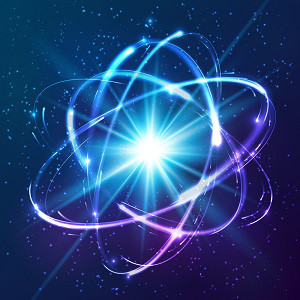
Frequency therapy - mode of operation and effect
Currently, many frequency therapy devices are offered on the market and sometimes the advertising messages of the respective manufacturers of frequency therapy devices sound very promising.
But what exactly is frequency therapy and is it really a form of therapy? How does frequency therapy affect the human body.
If you look for explanations on the internet about frequency therapy from the manufacturers, you will hardly find anything and sometimes you will even find incorrect information.
In the following, I would like to offer you an explanation of frequency therapy and also clarify the effect in the human organism.
The radio frequency resonance (RFR) method uses the resonance of the radio frequency signal for examination and treatment.
It is generally known that only the radio frequency signal source (e.g. the proximity of a radio transmitter) is responsible for the health damage, whereas frequency generators used in medical practice do not pose any danger.
The RFR method, which examines the lower microorganisms, uses the 200-1200 kHz band of the frequency generator (with low current), whereby the connection periphery - using the interference principle - displays and measures the resonant frequency bands of the microorganisms.
This is made possible by the fact that the resonant bandwidth of viruses, bacteria and small fungi is much lower than that of living organs, which have much more complicated DNA structures and are more complexly organised.
The electron running along the DNA chain functions like a resonant circuit. It is common knowledge that when resonance occurs, the resistance of the resonant circuit and the voltage drops in the circuit are measurable.
It is mainly the traditional, approved drugs that are used to destroy pathogens, but when they are not effective, RFR technology can be used in medical practice, always accompanied by traditional clinical and laboratory controls.
The great exponents of medicine have always emphasised that therapy should always be based on the principle of cause and effect, and symptomatic treatment of patients is only allowed when the cause-effect principle cannot be applied for some reason, either because the pathogen has not been identified, or because the effective drugs that could destroy the already identified pathogens are not available (e.g. in the case of certain viruses, antibiotic-resistant bacteria and fungi)
The frequency therapy method can identify the organism's infection by localising the resonant pathogens.
These results can then be correlated with the patient's symptoms and accurate clinical diagnosis based on traditional microbiological tests, the results of clinical laboratory measurements, and traditional and modern medical examination methods.
The basis of treatment with radio waves is their ability to penetrate all tissues of the body, they are also very good at destroying microorganisms that occur in places where other, traditional methods are unsuccessful, e.g. in the brain, where otherwise effective antibiotics have difficulty crossing the blood-brain barrier. Even if they overcome this barrier, they cannot reach suitable bacteriostatic or bactericidal concentrations.
The primary structure of DNA is known to consist of two complementary twin strands, forming what is known as a double helix, which in turn creates a secondary structure.
The "biological coil", which is developed in dependence on the secondary structure of the DNA, generates a resonance in the frequency range.
A "repulsive" force appears between the windings of the coil - due to the same charge - which tries to push them apart. When the coil expands, the frequency deviates and therefore no longer oscillates at the same frequency.
Its expansion creates a pulling force and the frequency of the secondary DNA slowly returns to the original frequency range and can resonate again with the same sinusoidal signal.
As we know from the article Resonance Catastrophe from the series on frequency therapy, every biological system has a so-called natural frequency. If this frequency is touched, the system (e.g. bacterium, virus, etc.) is forced to resonate until the biological system can no longer withstand the oscillation and is destroyed.
Therefore, the length (duration) of the respective frequencies is also important in frequency therapy, for more details see the lecture: Frequency therapy correctly applied.
If the change in the DNA of the pathogen is irreversible - e.g. the DNA chain is severed - the resonance cannot be restored, the affected virus, bacterium or fungus is destroyed, and the corresponding systems of the body break down the remnants of the pathogen and remove them from the body.
Historically, frequency therapy has the problem that very many authors made mistakes or misinterpretations beforehand, which still have an effect today.
This has led to frequency therapy being known more as a method of naturopaths and healers than of conventional medicine.
This is often due to the fact that there are currently mystical or simply insufficiently functioning devices on the market, and on the other hand the training or literature is not available in German.
However, it is all the more gratifying that in recent years there has been a steady increase in interest in the field of frequency therapy, also on the part of representatives of orthodox medicine, who are also using these frequency therapy devices in day-to-day practice, and above all using them correctly, and are thus also able to record successes.
Frequency therapy, used with the right equipment and the right understanding, is a modern application of modern physics, where RFR technology makes it possible to examine pathological processes in a different way.
The private user of frequency therapy devices should keep in mind that complex systems also require a basic understanding of the subject matter of frequency therapy.
Many devices on the market do not promise what they deliver, which leads to the fact that the whole frequency therapy is often presented as pseudo-science among esoterics.
